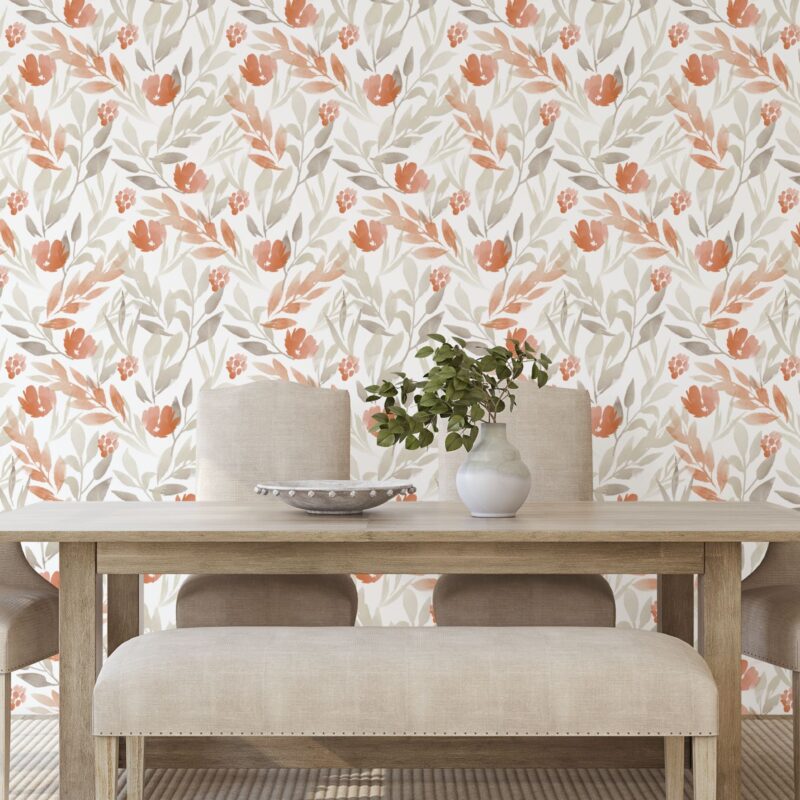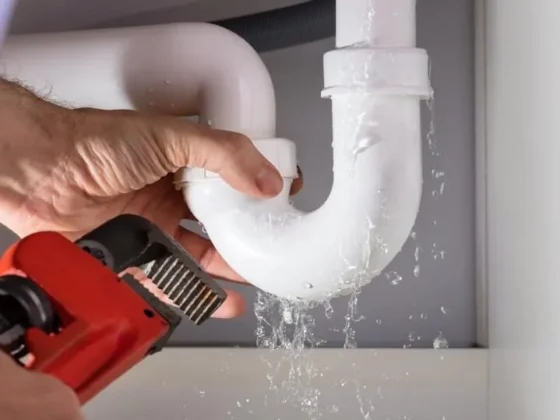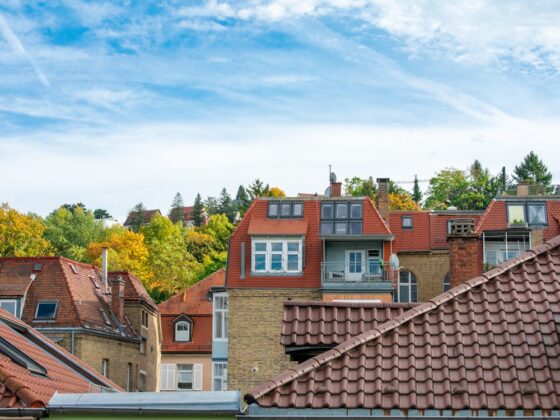When creating distinct areas within an open floor plan, using physical walls isn’t the only option. Design wallpapers offer a stylish and flexible solution that allows you to define spaces without adding walls. This approach is especially useful in modern homes and offices where open-concept designs are favored. In this guide, we’ll explore how to define spaces without walls using wallpaper, particularly focusing on wallpaper that is peel and stick for convenience and versatility.
Why Define Spaces Without Walls?
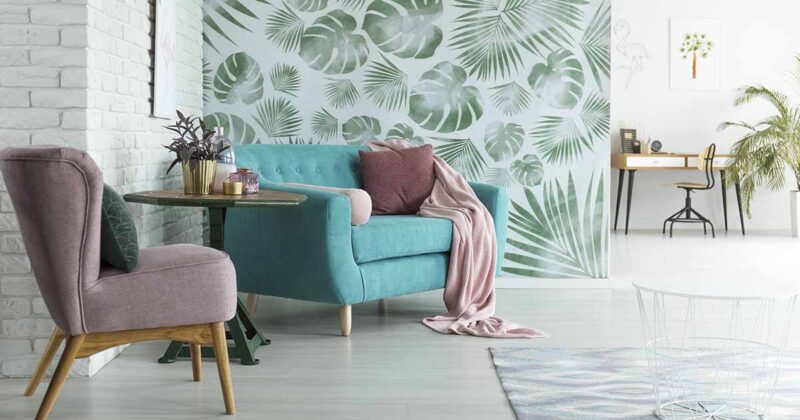
Open floor plans are popular for their airy, spacious feel. However, they can sometimes lack clearly defined areas, making the space feel chaotic. Defining specific zones for activities like dining, working, and lounging can help create a more organized and functional environment. Instead of adding barriers, design wallpapers provide a non-intrusive way to achieve this while enhancing your interior style.
Choosing the Right Wallpaper
1. Select Your Theme and Color Palette
Before diving into the wallpaper application, start by defining the overall theme and color palette of your space. For instance, if you’re aiming to create a cozy reading nook, go for warm tones and soft patterns. For a modern workspace, consider bold geometric designs. Remember that the wallpaper should complement the existing decor while still standing out enough to define the area.
2. Opt for Wallpaper That is Peel and Stick
Wallpaper that is peel and stick is an excellent choice for defining spaces without walls. This type of wallpaper is easy to apply, remove, and reposition, making it perfect for both renters and those who like to frequently update their interiors. Peel-and-stick wallpaper is available in a wide range of styles, allowing you to explore different looks without committing to a permanent change.
How to Define Different Spaces Using Wallpaper
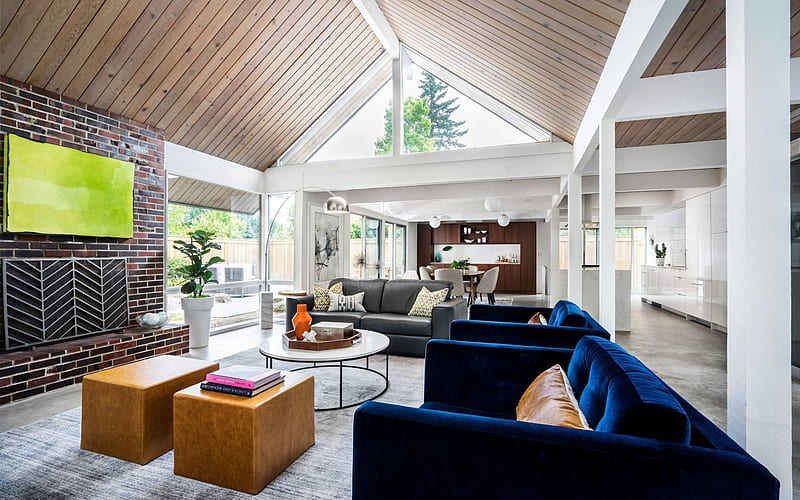
1. Create Visual Separation in an Open Floor Plan
In an open-plan living space, you can use design wallpapers to visually separate different zones. For example, apply a feature wall behind the dining area with a distinct pattern that contrasts with the rest of the space. This creates a clear boundary for the dining area without the need for physical walls. This method not only defines the space but also adds an eye-catching element to your home.
2. Define Corners or Nooks
Another clever way to define spaces using wallpaper is by highlighting corners or small nooks. If you have an unused corner in your living room or bedroom, transform it into a cozy reading spot with a unique wallpaper pattern. A soothing design wallpaper can create an inviting atmosphere while clearly setting this space apart from the rest of the room.
3. Design a Home Office
With more people working from home, defining a dedicated workspace has become essential. Instead of setting up your desk against a plain wall, use wallpaper that is peel and stick to create a professional backdrop. A patterned or textured wallpaper can help clearly separate your workspace from other areas of your home, helping you switch into work mode when needed.
4. Enhance Transitional Spaces
Hallways and entryways are often overlooked, but they can also benefit from defined spaces. Design wallpapers can make these transitional spaces more visually interesting while distinguishing them from adjoining rooms. By choosing a wallpaper that contrasts with the colors of nearby areas, you can turn a hallway into a stylish corridor that feels like a unique part of your home.
Step-by-Step Guide to Applying Wallpaper
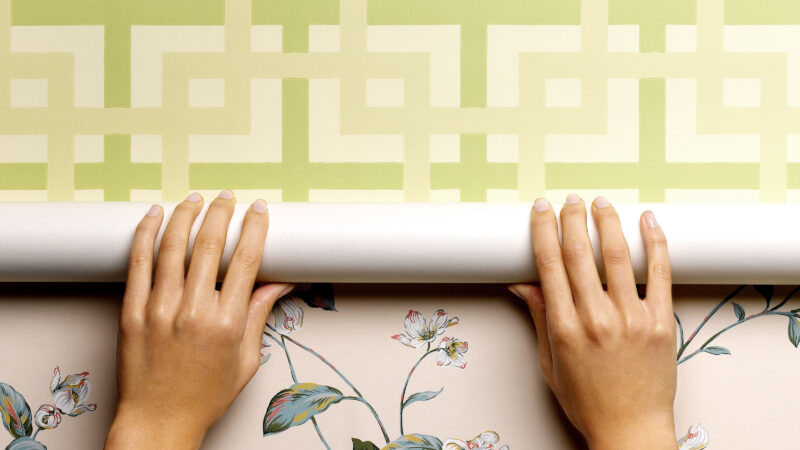
1. Measure Your Space
Before purchasing wallpaper, measure the area you want to cover. This helps you determine how much wallpaper you need and ensures you choose the right design for the size of your space.
2. Prepare the Wall Surface
Ensure that the wall is clean, smooth, and dry before applying wallpaper. For best results, lightly sand any rough spots and wipe away dust. If you’re using peel-and-stick wallpaper, a smooth surface is key to ensuring it adheres properly.
3. Plan Your Layout
Before peeling off the backing, plan out the layout by holding the wallpaper up against the wall. This allows you to see how the pattern will look in your space and make any adjustments before sticking it on.
4. Apply the Wallpaper
Start from the top and slowly peel and stick the wallpaper down, smoothing out any air bubbles as you go. Use a smoothing tool or a clean cloth to press the wallpaper firmly against the wall. If the wallpaper isn’t aligned correctly, simply peel it back and reposition it—this flexibility is one of the key advantages of using peel-and-stick wallpaper.
5. Trim Excess Edges
Once the wallpaper is applied, use a utility knife to carefully trim any excess material along the edges for a clean, professional finish.
Benefits of Using Design Wallpapers
Design wallpapers are versatile, stylish, and practical for defining spaces without needing walls. They allow for easy updates, especially with peel-and-stick options, and can make any room feel more intentional and well-organized. Whether you’re separating functional zones in an open plan or creating cozy corners in a large room, wallpaper is a creative solution that blends design with practicality.
Conclusion
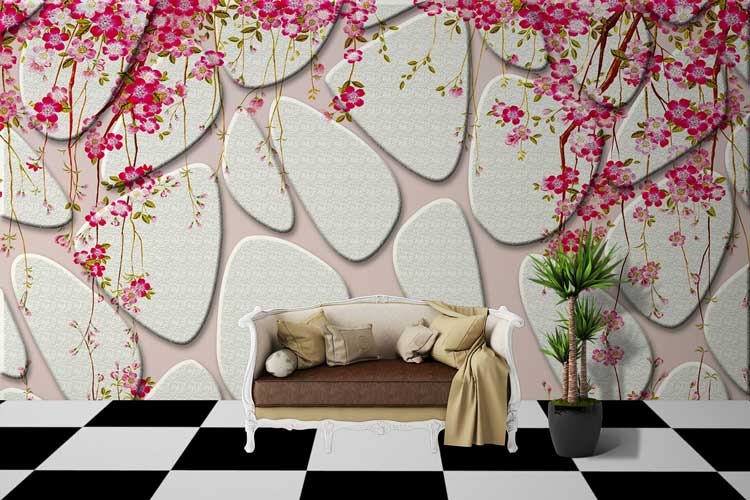
Defining spaces without walls is an art that requires a mix of creativity and practicality. With the help of design wallpapers, you can transform your home into a well-organized, aesthetically pleasing environment. Whether you’re highlighting a small nook, setting up a home office, or visually dividing an open floor plan, wallpaper offers a flexible and stylish approach that suits various needs. Give it a try and see how easy it is to redefine your space without ever building a wall!
